
Manual awnings provide shade and protection‚ ideal for outdoor spaces․ They come in retractable and stationary designs‚ offering durability and style․ Understanding their components and benefits helps in making informed decisions for installation and maintenance․
1․1 What Are Manual Awnings?
Manual awnings are fabric coverings mounted on walls or RVs‚ providing shade and weather protection․ Unlike motorized versions‚ they rely on a manual mechanism‚ such as a crank or handle‚ for operation․ The core component is a torsion spring system‚ which stores energy when the awning is retracted․ This spring tension is released when the awning is extended‚ allowing it to roll out smoothly․ Manual awnings are popular for their simplicity‚ durability‚ and cost-effectiveness‚ making them a preferred choice for both residential and recreational vehicles․ They come in various styles‚ including folding arm awnings and roll-up designs‚ and are typically made of weather-resistant fabrics like polyester or acrylic․ The lack of electrical components makes them ideal for off-grid use or situations where power availability is a concern․ Understanding their construction and functionality is essential for proper installation‚ maintenance‚ and troubleshooting․
1․2 Benefits of Manual Awnings
Manual awnings offer numerous benefits‚ making them a practical and economical choice for outdoor shading․ They provide excellent protection from the sun‚ rain‚ and wind‚ extending the usability of patios‚ decks‚ and RVs․ Their manual operation eliminates the need for electricity‚ making them ideal for off-grid locations or areas with frequent power outages․ Additionally‚ manual awnings are cost-effective‚ as they require less initial investment and maintenance compared to motorized versions․ They are also durable‚ with a simple yet robust design that withstands harsh weather conditions․ The absence of complex mechanisms reduces the risk of mechanical failure‚ ensuring longevity․ Furthermore‚ manual awnings are energy-efficient‚ as they rely on human effort rather than electricity․ They also enhance the aesthetic appeal of outdoor spaces‚ offering a wide range of styles and fabrics to suit different architectural designs․ Overall‚ manual awnings are a reliable‚ versatile‚ and eco-friendly solution for shade and weather protection․
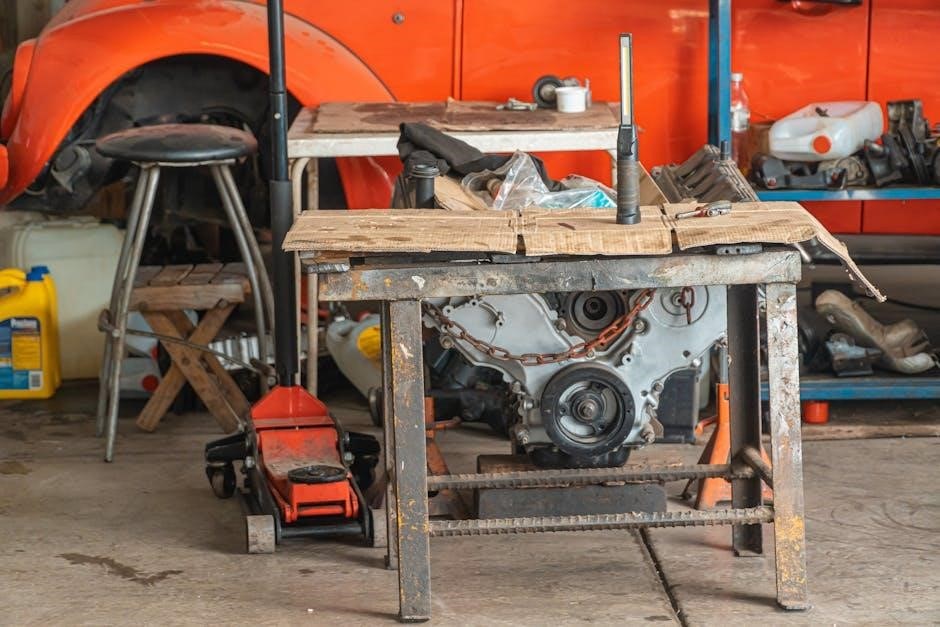
1․3 Types of Manual Awnings
Manual awnings come in various styles to suit different needs and preferences․ The most common type is the retractable manual awning‚ which can be easily folded and stored when not in use‚ offering flexibility and convenience․ Fixed manual awnings are permanently installed and provide constant shade‚ ideal for patios and decks․ RV manual awnings are designed for recreational vehicles‚ offering a compact and portable shading solution․ Window and door awnings are smaller‚ installed above windows and doors‚ protecting entryways from weather elements․ Freestanding manual awnings are independent structures that can be placed anywhere‚ providing shade without attachment to a building․ Each type is constructed with durable materials‚ such as waterproof fabrics and sturdy frames‚ ensuring longevity․ Whether for residential‚ RV‚ or commercial use‚ there is a manual awning design to fit every application‚ enhancing functionality and aesthetics while offering reliable shade solutions․
1․4 Overview of Manual Awning Parts
Manual awnings are composed of several essential components that work together to provide shade and durability․ The torsion springs are critical‚ as they store energy to keep the awning fabric taut․ Support arms attach to the wall and extend outward‚ holding the awning in place․ The roller tube is the central cylinder around which the fabric wraps when retracted․ Awning fabric is typically made of weather-resistant materials like vinyl or canvas‚ offering protection from the sun and rain․ Wall brackets secure the awning to the building‚ ensuring stability․ Mounting hardware includes screws and bolts for installation․ Adjustment handles allow users to manually open or close the awning․ Finally‚ the retraction mechanism enables smooth folding and unfolding․ Understanding these parts is crucial for maintenance and repair‚ ensuring the awning functions properly and lasts for years․ Each component is designed for durability‚ with materials like stainless steel and waterproof fabrics commonly used․
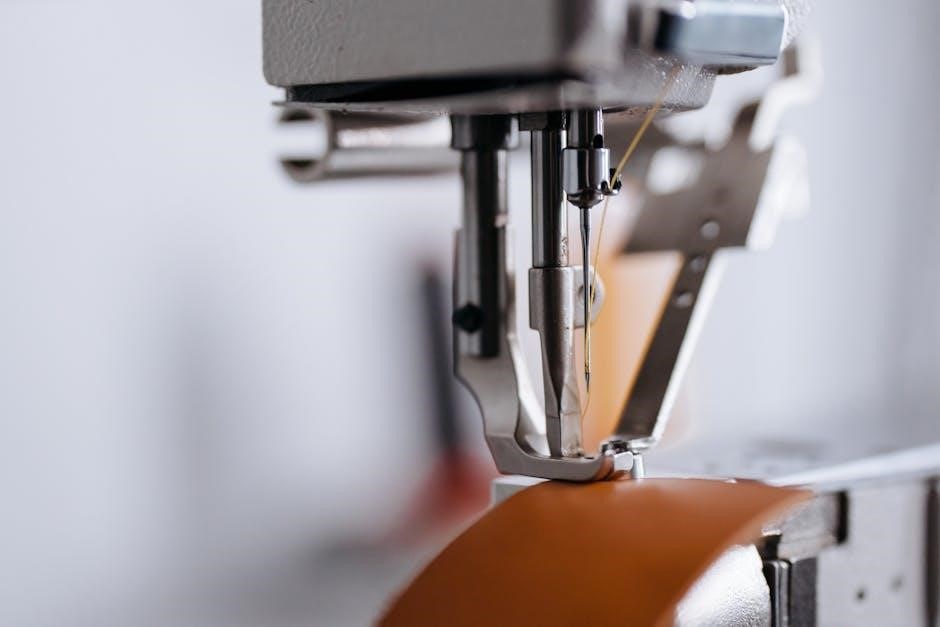
Key Components of Manual Awnings
Manual awnings are built with essential components like torsion springs‚ support arms‚ and a roller tube for smooth operation․ Awning fabric‚ wall brackets‚ and adjustment handles ensure durability and functionality‚ while mounting hardware secures the structure․
2․1 Torsion Springs

Torsion springs are a critical component in manual awnings‚ providing the necessary tension to roll and unroll the fabric smoothly․ These springs store energy when the awning is closed and release it when opened‚ ensuring ease of operation․ Proper installation and maintenance of torsion springs are essential to prevent damage and ensure longevity․ Over time‚ springs can weaken‚ leading to difficulties in opening or closing the awning․ Regular inspection and lubrication of the moving parts can help maintain their functionality․ If a torsion spring fails‚ it may need to be replaced to restore the awning’s performance․ Understanding how torsion springs work and how to care for them can significantly enhance the overall efficiency and lifespan of a manual awning․
2․2 Support Arms
Support arms are essential components of manual awnings‚ providing structural integrity and stability․ These arms are attached to the wall brackets and extend outward to hold the awning fabric taut‚ ensuring proper coverage and protection from the elements․ Typically made of durable materials like aluminum or steel‚ support arms are designed to withstand various weather conditions while maintaining their strength․ They are often adjustable‚ allowing users to customize the awning’s pitch for optimal shade and water runoff․ Over time‚ support arms may experience wear‚ such as loosening or corrosion‚ which can compromise the awning’s stability․ Regular inspection and lubrication of the joints can help prevent issues․ Replacement parts for support arms are widely available‚ making repairs manageable for DIY enthusiasts․ Properly functioning support arms are crucial for the awning’s performance and longevity‚ ensuring it remains a reliable shade solution for outdoor spaces․
2․3 Roller Tube
The roller tube is a critical component of manual awnings‚ serving as the core around which the awning fabric is wrapped․ Typically made of durable materials like aluminum or steel‚ it ensures smooth and consistent operation when opening or closing the awning․ The roller tube is designed to withstand tension from the torsion springs‚ which help maintain the fabric’s tautness and prevent sagging․ Proper alignment and installation of the roller tube are essential for the awning’s functionality‚ as any misalignment can lead to uneven fabric distribution or difficulty in operation․ Over time‚ the roller tube may experience wear‚ such as rust or dents‚ which can affect performance․ Regular inspection and maintenance‚ including lubricating moving parts‚ can extend its lifespan․ If damaged‚ the roller tube can usually be replaced with a compatible part‚ ensuring the awning continues to function effectively․ Its durability and reliability make it a cornerstone of manual awning systems․
2․4 Awning Fabric
The awning fabric is the visible and functional covering of the awning‚ providing shade and protection from the elements․ Made from durable‚ weather-resistant materials such as acrylic‚ polyester‚ or vinyl‚ it is designed to withstand outdoor conditions‚ including sunlight‚ rain‚ and wind․ The fabric is typically attached to the roller tube and support arms‚ ensuring a smooth and even surface when extended․ Over time‚ the fabric may fade or develop mildew‚ requiring regular cleaning and maintenance to preserve its appearance and functionality․ In cases of severe damage‚ the fabric can be replaced with a new one‚ matching the original design and size․ Proper care‚ including retraction during harsh weather‚ can extend its lifespan․ The choice of fabric material and pattern can also enhance the aesthetic appeal of the awning‚ making it a customizable feature for various outdoor spaces․ Its durability and versatility make it a key component of manual awning systems․
2․5 Wall Brackets
Wall brackets are essential for securing the awning to the exterior of a building or RV‚ providing a stable base for the entire system․ Made from durable materials like stainless steel or powder-coated aluminum‚ they are designed to withstand various weather conditions and support the weight of the awning․ These brackets are typically fixed to the wall or soffit‚ ensuring proper alignment and stability․ Depending on the awning’s size and type‚ multiple brackets may be required to distribute the load evenly․ Proper installation is critical to prevent the awning from sagging or collapsing․ The brackets are usually pre-drilled for easy mounting and come with necessary hardware․ Regular inspection and cleaning of the brackets are recommended to ensure longevity․ Their durability and secure attachment make them a vital component for both manual and automatic awning systems‚ ensuring safety and functionality over time․
2․6 Mounting Hardware
Mounting hardware is crucial for installing and securing manual awnings to various surfaces․ This hardware typically includes screws‚ bolts‚ brackets‚ and anchors designed to fit specific materials like wood‚ metal‚ or vinyl․ The choice of hardware depends on the awning’s size and weight‚ as well as the type of wall or surface it’s being attached to․ Proper selection ensures a stable and secure installation‚ preventing damage to both the awning and the structure it’s mounted on․ Many manufacturers provide specific mounting kits tailored to their awning models‚ making installation easier․ It’s important to follow the manufacturer’s instructions to ensure all components are correctly fastened․ Regular inspection of the mounting hardware is recommended to check for loosening or corrosion‚ ensuring the awning remains safely in place․ Durable materials and precise fitting are key to the longevity and functionality of the awning system․
2․7 Adjustment Handles
Adjustment handles are essential components of manual awnings‚ enabling users to control the tension and positioning of the awning fabric․ These handles are typically located on the support arms or the retraction mechanism and are used to tighten or loosen the fabric‚ ensuring proper alignment and tautness․ They play a critical role in maintaining the structural integrity of the awning‚ especially during windy conditions․ Adjustment handles are often designed with ergonomic grips for ease of use and may include locking mechanisms to secure the awning in place․ Regular use of these handles helps prevent sagging or uneven fabric‚ ensuring optimal shade coverage and extending the lifespan of the awning․ Proper maintenance‚ such as lubricating the handles‚ is recommended to ensure smooth operation․ Understanding how to use adjustment handles correctly is vital for the safe and effective functioning of manual awnings․
2․8 Retraction Mechanism
The retraction mechanism is a vital part of manual awnings‚ responsible for smoothly opening and closing the fabric․ Typically operated by adjustment handles‚ this mechanism uses a combination of springs and gears to store the awning fabric securely when not in use․ The retraction mechanism is attached to the roller tube and torsion springs‚ ensuring the fabric remains taut and evenly distributed․ Proper installation and maintenance of this component are crucial to prevent issues like difficulty in opening or closing the awning․ Regular lubrication of moving parts within the retraction mechanism helps ensure smooth operation and extends its lifespan․ Over time‚ wear and tear can cause the mechanism to malfunction‚ requiring professional inspection or replacement․ A well-functioning retraction mechanism enhances the durability and usability of manual awnings‚ making them a practical choice for outdoor shade solutions․
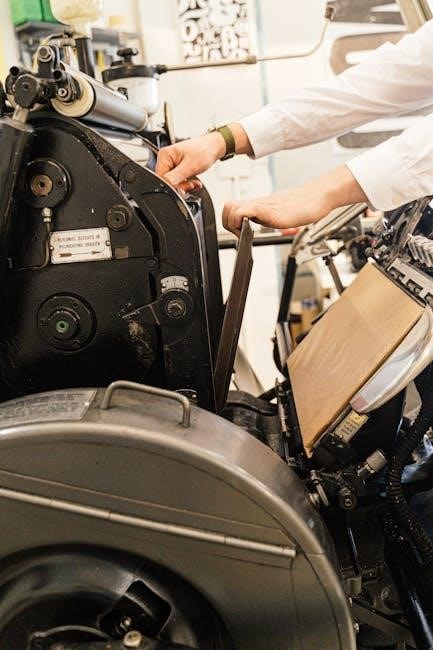
Installation and Assembly of Manual Awnings
Installing manual awnings requires careful planning and precise execution․ Ensure wall brackets are securely fastened‚ and the awning fabric is properly aligned․ Use the provided tools and follow the manual step-by-step for a seamless setup․
3․1 Preparing for Installation
Preparing for manual awning installation involves several crucial steps․ First‚ inspect the wall or soffit where the awning will be mounted to ensure it is sturdy and free from obstructions like light fixtures or windows․ Next‚ gather all necessary tools and materials‚ such as drills‚ screws‚ and brackets‚ as specified in the manual․ It is essential to read through the installation guide thoroughly to understand the process and identify any specific requirements․ Additionally‚ ensure the area around the installation site is clear to avoid accidents․ Proper preparation ensures a smooth and safe installation process‚ preventing potential issues like uneven mounting or structural damage․ Always follow the manufacturer’s instructions to guarantee a secure and functional setup․
3․2 Tools and Materials Needed
Installing a manual awning requires specific tools and materials to ensure a secure and proper setup․ Essential tools include a drill‚ screwdriver‚ wrench‚ and measuring tape․ For materials‚ you’ll need wall brackets‚ mounting screws‚ and bolts‚ which are typically provided with the awning kit․ Additional items like a ladder‚ pencil‚ and level are necessary for accurate installation․ Ensure all parts from the kit‚ such as torsion springs and support arms‚ are accounted for before starting․ Refer to the manual for a detailed parts list and diagram to confirm you have everything needed․ Proper preparation of tools and materials saves time and prevents installation delays․ Always double-check the compatibility of materials with your specific awning model to avoid issues during assembly․ Failure to use the correct tools and materials can lead to unsafe or improper installation‚ potentially causing damage to the awning or surrounding structure․
3․3 Step-by-Step Installation Guide
Begin by mounting the wall brackets to the exterior wall using screws or bolts‚ ensuring they are level and securely fastened․
Attach the awning frame to the brackets‚ aligning it properly and tightening the bolts․
Install the support arms‚ connecting them to both the wall brackets and the awning frame for stability․
Attach the roller tube to the frame and ensure it is properly aligned with the torsion spring for smooth operation․
Secure the awning fabric to the roller tube‚ making sure it is tight and evenly spread․
Install the adjustment handles and retraction mechanism‚ ensuring they function correctly․
Test the awning by opening and closing it to confirm smooth operation and proper tension․
Finally‚ install any additional accessories like valances or lighting․ Always follow the manufacturer’s instructions and consult the parts diagram for specific guidance․
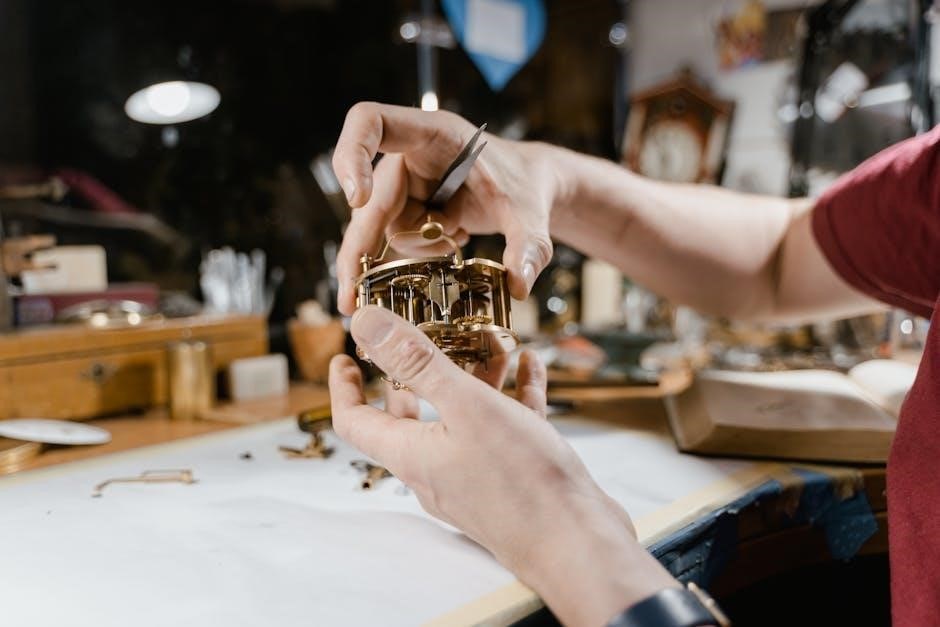
Maintenance and Repair of Manual Awnings
Regular cleaning of the awning fabric and lubricating moving parts ensures smooth operation․ Inspect for damage and wear‚ addressing issues promptly to prevent further deterioration and extend the product’s lifespan effectively․
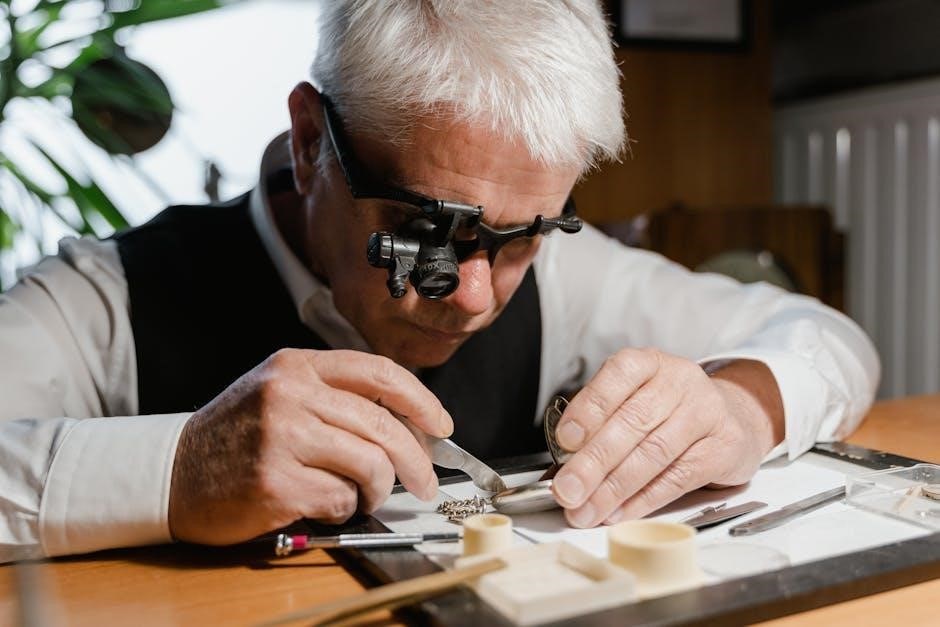
4․1 Cleaning the Awning Fabric
Cleaning the awning fabric is essential for maintaining its appearance and durability․ Use mild soap and water with a soft-bristle brush to gently scrub away dirt and stains․ Avoid harsh chemicals or abrasive cleaners‚ as they may damage the material․ For tougher stains‚ allow the soap solution to sit for a few minutes before rinsing thoroughly with clean water․ Regular cleaning prevents mold and mildew buildup‚ ensuring the fabric remains waterproof and UV-resistant․ Always refer to the manufacturer’s instructions for specific cleaning recommendations tailored to your awning’s material․ Proper maintenance enhances both functionality and longevity‚ keeping your awning looking like new for years to come․
4․2 Inspecting for Damage

Regularly inspecting your manual awning for damage is crucial to ensure its longevity and performance․ Start by examining the fabric for any signs of tears‚ holes‚ or fading․ Check the seams and stitching for weakness or separation․ Next‚ inspect the metal components‚ such as the torsion springs‚ support arms‚ and roller tube‚ for rust‚ corrosion‚ or bending․ Ensure all brackets and mounting hardware are securely attached to the wall and properly aligned․ Test the adjustment handles and retraction mechanism to confirm they operate smoothly without resistance․ Look for sagging or unevenness in the fabric‚ which may indicate worn-out springs or misaligned arms; Addressing minor issues early can prevent costly repairs and ensure your awning functions reliably․ Always refer to your manual for specific inspection guidelines tailored to your awning model․
4․3 Lubricating Moving Parts
Lubricating the moving parts of your manual awning is essential to ensure smooth operation and extend its lifespan․ Start by cleaning the hinges‚ springs‚ and support arms to remove dirt or debris; Apply a silicone-based lubricant or marine-grade grease to these areas‚ focusing on pivot points and joints․ Avoid over-lubricating‚ as excess can attract dust and dirt․ For torsion springs‚ lightly spray with a rust-inhibiting lubricant to maintain flexibility․ After lubricating‚ open and close the awning several times to distribute the lubricant evenly․ Regular lubrication helps prevent corrosion‚ reduces friction‚ and ensures the awning opens and closes effortlessly․ Refer to your manual for specific recommendations on the type of lubricant to use․ Proper maintenance will keep your awning functioning like new and provide years of reliable service․
4․4 Repairing or Replacing Damaged Parts
Identifying and addressing damaged parts of your manual awning is crucial for maintaining its functionality and longevity․ Start by inspecting the awning for signs of wear‚ such as frayed fabric‚ bent support arms‚ or corroded hardware․ For minor damage‚ like small tears in the fabric‚ use a patch kit to repair them․ For more extensive damage‚ replace the entire fabric or specific components․ Torsion springs‚ if worn or rusted‚ should be replaced to ensure proper tension․ Support arms and roller tubes may need tightening or replacement if they show signs of sagging or misalignment․ Always refer to the parts diagram in your manual to identify the correct components․ When replacing parts‚ use high-quality materials and follow the manufacturer’s instructions․ Proper installation ensures the awning operates smoothly and safely․ Regular inspections and timely repairs can prevent further damage and extend the life of your awning․
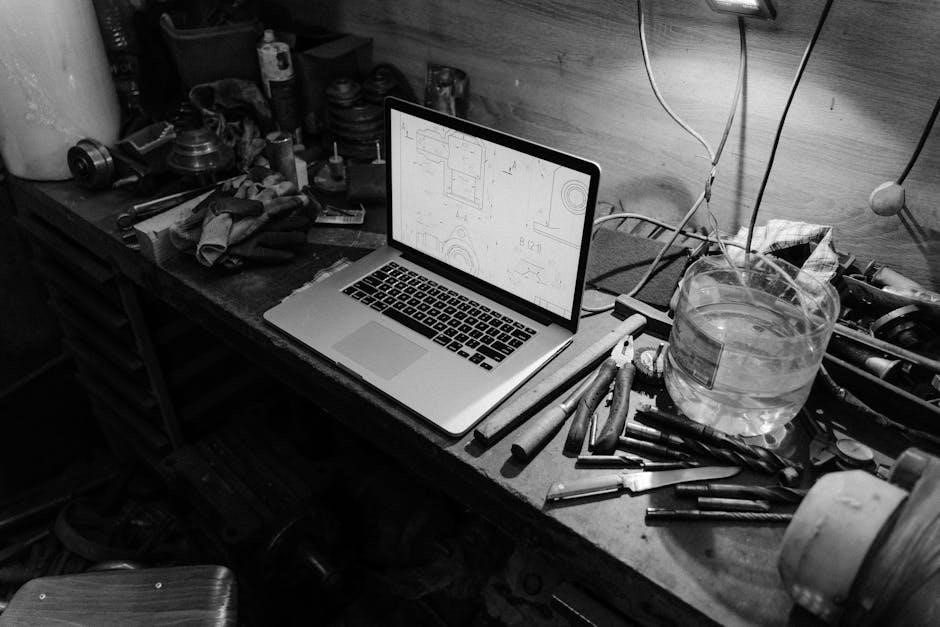
Troubleshooting Common Issues
Manual awnings can face issues like difficulty opening/closing‚ sagging fabric‚ or noisy parts․ Regular lubrication and inspection of torsion springs and support arms often resolve these problems․ Adjusting or replacing worn components ensures smooth operation․
5․1 Difficulty Opening or Closing the Awning
Difficulty in opening or closing a manual awning is often due to worn or corroded parts‚ such as torsion springs or support arms․ Over time‚ the tension in the torsion spring can weaken‚ making it harder to operate the awning․ Additionally‚ dirt or debris accumulation on moving parts can cause friction‚ leading to sticking or resistance․ It is essential to regularly inspect and clean the components‚ ensuring they are free from obstructions․ Applying a suitable lubricant to the hinges and springs can also help restore smooth operation․ If the issue persists‚ it may be necessary to replace the torsion spring or other damaged parts․ Always refer to the manufacturer’s manual for specific guidance on troubleshooting and maintenance to ensure the awning functions properly and safely․
5․2 Sagging or Uneven Awning Fabric

Sagging or uneven awning fabric can occur due to improper installation‚ worn-out support arms‚ or damaged awning parts․ Over time‚ the fabric may stretch or lose its tension‚ causing it to droop․ Additionally‚ if the roller tube is not properly aligned or the wall brackets are loose‚ the fabric may hang unevenly․ To address this‚ ensure all mounting hardware is securely fastened and adjust the support arms to maintain even tension․ Inspecting the fabric for tears or damage is also crucial‚ as gaps or weak spots can lead to sagging․ If the issue persists‚ consider tightening the torsion spring or replacing it if it has lost its tension․ Regularly cleaning the fabric and ensuring it is properly secured can prevent such problems․ Always refer to the manufacturer’s instructions for specific guidance on adjusting and maintaining your awning fabric to ensure it remains taut and evenly spread․
5․3 Noisy or Sticking Parts
Noisy or sticking parts in manual awnings can be caused by worn or dirty components‚ lack of lubrication‚ or misalignment․ Regular inspection and maintenance are essential to prevent such issues․ Lubricate moving parts like torsion springs‚ support arms‚ and adjustment handles with a silicone-based spray to reduce friction․ Clean dirt and debris from the roller tube and retraction mechanism‚ as buildup can cause sticking․ If the awning is noisy when opening or closing‚ check for loose mounting hardware or wall brackets and tighten them securely․ Inspect the fabric for folds or creases that might interfere with smooth operation․ If sticking persists‚ consider replacing worn parts such as the torsion spring or support arms․ Always refer to the manufacturer’s manual for specific lubrication and maintenance recommendations to ensure optimal performance and extend the lifespan of your awning․